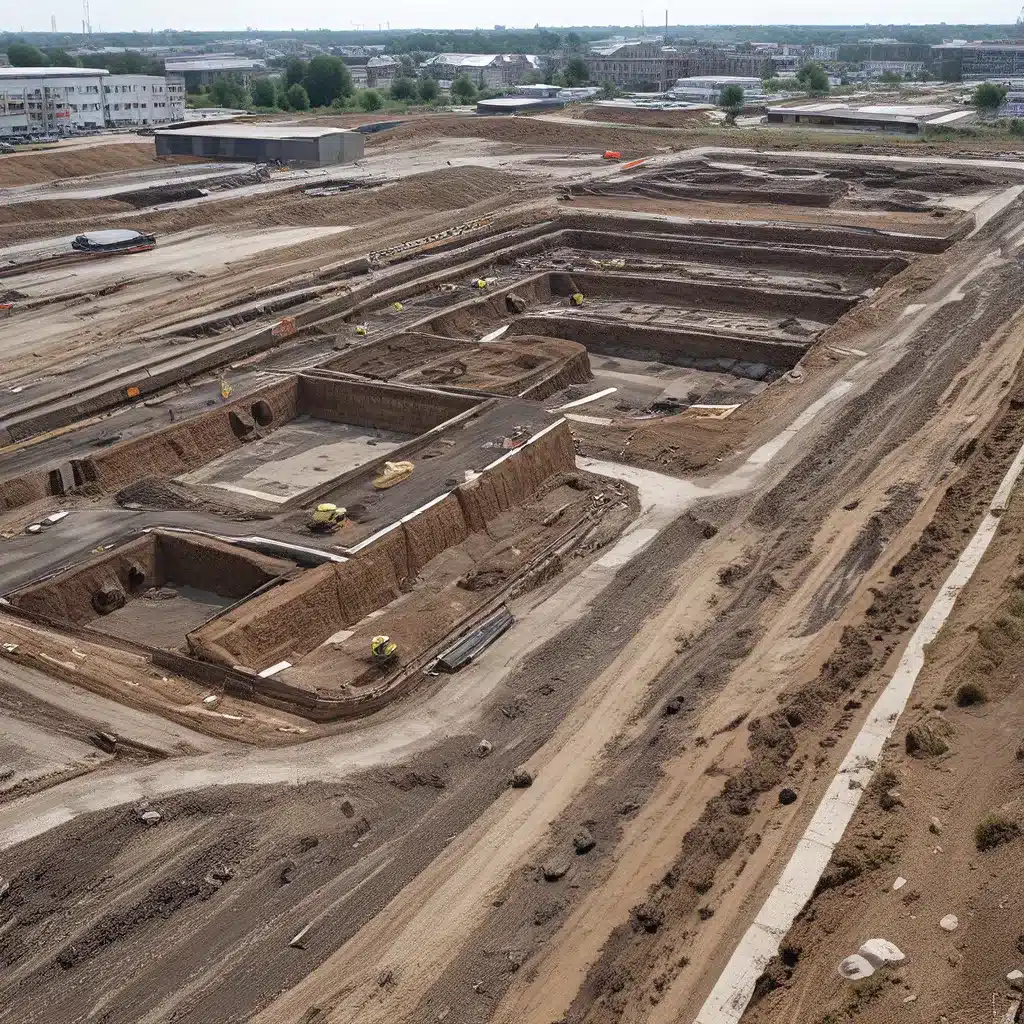
Ah, the ever-elusive quest for clean, pristine environments – a challenge as old as time itself. As an environmental enthusiast, I’ve often found myself pondering the intricate dance between human progress and Mother Nature’s delicate balance. And when it comes to tackling contaminated sites, the stakes have never been higher.
Unraveling the Complexities of Contaminated Sites
Imagine a mosaic of forgotten industrial relics, each piece a testament to our ever-evolving relationship with the natural world. These so-called “contaminated sites” are like scars on the earth’s surface, a physical manifestation of our past missteps. But as the saying goes, “where there’s a will, there’s a way” – and when it comes to remediating these blemishes, we have a veritable toolbox of strategies at our disposal.
Recent research has shed light on the myriad of factors that come into play when tackling contaminated sites. From the type and extent of contamination to the unique geographical and ecological considerations, each site presents its own set of challenges. And let’s not forget the ever-present specter of budgetary constraints and regulatory hurdles – it’s enough to make even the most seasoned environmental warrior break a sweat.
Embracing the Green Remediation Mindset
But fear not, my fellow eco-crusaders! The tide is turning, and a new wave of “green remediation” strategies is making waves in the industry. As outlined by the EPA, these innovative approaches aim to minimize the environmental footprint of cleanup efforts, while still ensuring that the end result is a safe and sustainable solution.
At the heart of this green remediation revolution is a fundamental shift in mindset. Instead of simply addressing the immediate problem, we’re now considering the long-term impacts of our actions. It’s about looking at the bigger picture and ensuring that our cleanup efforts don’t come at the expense of other environmental considerations.
Strategies for Effective and Sustainable Remediation
So, what does this green remediation approach entail, you ask? Well, buckle up, because we’re about to embark on a journey through a veritable cornucopia of strategies and techniques.
Renewable Energy Integration: One of the cornerstones of green remediation is the incorporation of renewable energy sources into the cleanup process. Imagine a contaminated site powered by the very sun that shines upon it, or a groundwater treatment system fueled by the gentle breeze that whispers through the trees. Recent studies have demonstrated the impressive efficiency and cost-saving potential of these renewable energy applications.
Water Conservation and Protection: Water is the lifeblood of our planet, and when it comes to contaminated sites, its preservation is paramount. Green remediation strategies focus on minimizing water usage, ensuring that any water used is treated and recycled, and safeguarding nearby water sources from potential contamination. It’s all about striking a delicate balance between cleanup and conservation.
Emission Reduction and Carbon Sequestration: Another key aspect of green remediation is the focus on reducing greenhouse gas emissions and mitigating the overall carbon footprint of the cleanup process. This can involve the use of clean fuel technologies, the deployment of carbon-capturing systems, and the integration of nature-based solutions like wetland restoration.
Material Resource Conservation: Sustainability isn’t just about energy and water – it’s also about the wise use of materials. Green remediation encourages the recycling and reuse of materials, the minimization of waste, and the prioritization of locally sourced, environmentally-friendly supplies.
Land and Ecosystem Protection: Last but not least, green remediation recognizes the vital role that land and ecosystems play in the grand scheme of things. Cleanup efforts must be carefully designed to protect critical habitats, preserve biodiversity, and enhance the overall ecological resilience of the site.
Putting Theory into Practice
Now, I know what you’re thinking – this all sounds great in theory, but how does it play out in the real world? Well, let me tell you, the success stories are enough to make even the most cynical of us feel a glimmer of hope.
Take, for example, the Inland Waters team, who have been at the forefront of green remediation efforts. By leveraging renewable energy sources, water conservation techniques, and innovative material management strategies, they’ve been able to tackle some of the most complex contaminated sites with remarkable efficiency and minimal environmental impact.
And the beauty of it all? These green remediation approaches aren’t just good for the planet – they’re also good for the bottom line. Reduced energy costs, less waste, and increased regulatory compliance add up to significant cost savings for site owners and operators. It’s a true win-win scenario.
Embracing the Future of Remediation
As we look ahead, the future of contaminated site remediation is undoubtedly a bright one. With the continued advancement of green remediation technologies and the growing recognition of their importance, I can’t help but feel a sense of cautious optimism.
Of course, there will always be challenges to overcome – from evolving regulatory landscapes to the inherent complexities of each unique site. But with a steadfast commitment to sustainability, an unwavering dedication to innovation, and a touch of that ever-elusive human touch, I believe we can tackle even the most daunting of contaminated sites.
So, my fellow eco-warriors, let’s embrace the green remediation revolution and show Mother Nature that we’re ready to make amends for our past transgressions. The road ahead may be long and winding, but with the right strategies and a whole lot of determination, I know we can create a cleaner, greener future for all.


